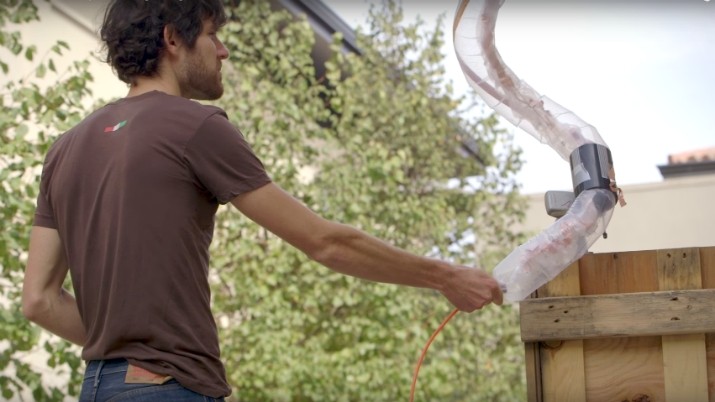On June 19, mechanical engineers from Stanford University and the University of California published a Science Robotics paper on a revolutionary new robot that looks and moves like a growing vine. Its lightweight design is inspired by natural organisms that cover distance by growing, like vines, fungi or nerve cells.
In initial trials run by its developers, the robot has proven successful in a range of previously unconquerable challenges. The simple yet genius robot could serve a wide range of purposes, most promisingly in the realms of search & rescue as well as medicine.

How does it work?
The robot is a tube of soft material, usually plastic, folded inside of itself like an inside-out sock. Operators pump pressurized air into one end of the tube, and the other end of the tube everts, extending until the ‘sock’ is turned outside-in. Its design is simple, yet incredibly useful in instances where previous robots have failed. Allison Okamura, senior author of the paper and professor of mechanical engineering at Stanford, explains:
“Essentially, we’re trying to understand the fundamentals of this new approach to getting mobility or movement out of a mechanism. It’s very, very different from the way that animals or people get around the world.”
What makes it so useful is that its body can remain still while maintaining movement at the tip. This means it can make its way through tight spaces and to hard to reach places. If it becomes jammed between rocks, the robot can still progress forwards as new material is added to the end.
See it in action, below.
The group of developers created a series of challenging obstacle courses to really test the limits of their creation, and it did not fail to impress. It successfully travelled over flypaper, sticky glue and even nails. Even though the soft robot was punctured it moved on unaffected, because the punctured area didn’t continue to move and was self-sealed. It then travelled up an ice wall and delivered a sensor which could potentially sense carbon dioxide emitted by survivors trapped under the rubble of a collapsed building.
The robot has a control system that unevenly inflates the robots body, causing it to turn left or right and enabling the operator to aim for a designated goal. A camera attached at its tip allows the operator to see where it’s moving. In other trials it was able to lift a 100 kilogram crate, and grow under a door gap that was only 10% of its diameter. It grew into a free standing structure that sent out a radio signal. It maneuvered through a dropped ceiling, pulling a cable through its body, providing a new method of routing wires in tight spaces.

Although the advantages of a soft, lightweight robot are various, there are still some challenges that arise. For one, controlling a soft robot is far more difficult than controlling a rigid robot, as a precise model of its motion is required. Nonetheless, the scientists behind this genius creation are excited for its future applications. In forthcoming developments, they hope to replace pressurized air with pressurized liquid, which would allow the robot to deliver water to trapped people, or put out fires in closed rooms. They hope to scale it far larger and far smaller, and are trialling stronger materials like Kevlar and rip-stop nylon.

